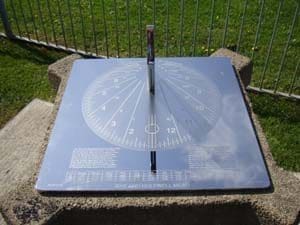Medium
Pair Bronze Kingfishers Perched on Stylised Perch sculpture for Sale for Outdoors Outside Exterior in Garden or Yard or Terrace by the Imaginative Sophie Louise White who writes…
“The Halcyon is a bird of Greek legend and the name is now commonly given to the European Kingfisher. The ancients believed that the bird made a floating nest in the Aegean Sea and had the power to calm the waves while brooding her eggs. Fourteen days of calm weather were to be expected when the Halcyon was nesting – around the winter solstice, usually 21st or 22nd of December. The Halcyon days are generally regarded as beginning on the 14th or 15th of December.
The source of the belief in the bird`s power to calm the sea originated in a myth recorded by Ovid. The story goes that Aeolus, the ruler of the winds, had a daughter named Alcyone, who was married to Ceyx, the king of Thessaly. Ceyx was drowned at sea and Alcyone threw herself into the waves in a fit of grief. Instead of drowning, she was transformed into a bird and carried to her husband by the wind.
The myth came to the English-speaking world in the 14th century, when, in 1398, John Trevisa translated Bartholomew de Glanville`s De proprietatibus rerum into Middle English:
“In the cliffe of a ponde of occean, Alcion, a see foule, in wynter maketh her neste and layeth egges in vii days and sittyth on brood… seuen dayes.”
By the 16th century the phrase `halcyon days` had lost its association with the nesting time of the bird and had taken on the figurative meaning of `calm days`. Shakespeare used the expression that way in Henry VI, Part I, 1592:
Assign`d am I to be the English scourge.
This night the siege assuredly I`ll raise:
Expect Saint Martin`s summer, halcyon days,
Since I have entered into these wars.
Artist Comment
Halcyon Days – Large (Pair Kingfishers statue)
by Sophie Louiseauthorwhite
£13,000
- The ArtParkS Guarentee
All the sculptures on the website are described by the Artists themselves stating the materiel they are made from and their dimensions. If they are stated to be suitable for outdoors they have a guarentee of 10 years subject to the effects of weathering which will alter their colour and finish over the years unless you give them regular cleaning and maintenance. For instance Bronze and to a lesser extent bronze resin/cold cast bronze will aquire a green patina, usually rather sought after and all could attract moss lichen and a greeny pollen especially under trees which should be removed regularly with warm water and washing up liquid.
Iron and steel will oxidise(rust ) and this falls outside our guarentee.
Organic materiel like wood, bark willow is variable and depends to a great extent on where it is sited and you should discuss any guarentee direct with the Artist as this too falls outside our Guarentee. - How does ArtParkS protect you?
From the moment you place an order and pay ArtParkS you are protected, because half is immediately used to pay the Artists deposit and the other half is retained till the sculpture is delivered safely’.
Insurance in transit should be arranged with the artist prior to ordering. - Why buy on ArtParkS?
When you choose a Work of Art from ArtParkS you have the confidence that the work has been selected by ArtParkS’s selectors and will be despatched direct from the Artist‘s studio or Foundry only after it has been scrutinised by their quality control process.
- How do i buy?
You can either talk or correspond with Peter at ArtParkS prior to ordering or just click on the buy now button and follow the instructions adding in the delivery charge unless the Artist is offering it free.
Payment can be made by Direct Debit, cheque, via credit or debit card, or Paypal though we try and avoid the latter because we have to forward the 5% they charge us on to you.
- Where can I have my order delivered?
Your Sculpture can be delivered wherever a delivery vehicle can gain access anywhere in the world. For special situations contact Peter on peter@artparks.co.uk or +44(0)1481 235571.

















